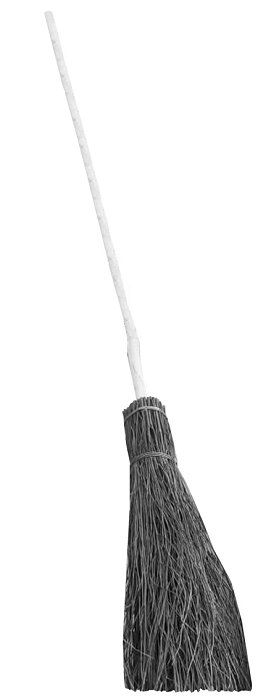| Wolverhampton had many slum properties, occupied by
the poorer members of society, who often had a 'hand to
mouth' existence. One small area of such poor housing
was in Brookes Street, on the northern side of Salop
Street. At the end of Brookes Street was a courtyard
containing 16 small houses in two blocks, known as
'Besom Yard'. Brookes Street and Besom Yard are not
marked on the 1840 Tithe map, but are included on the
1885 Ordnance Survey map, so the houses were built in
the middle of the 19th century. |

The location of Besom Yard.
| Each house consisted of a living room and two
upstairs bedrooms. The parents used one of the bedrooms
and possibly shared it for a while with a young child.
The remaining children shared the other bedroom. Because
of the high rates of infant mortality, families often
had up to ten children, so it was a tight squeeze.
Sometimes a house might be shared with another family,
so living conditions were very different to what we have
today. There was no running water in the houses. Water
was obtained from a hand operated pump in the yard.
There would be a kitchen range in the living room, that
was used for cooking and for heating. There was no gas
or electricity, so oil lamps were used at night. There
would be one on the landing to light the bedrooms
through an open door. A black ring would appear on the
ceiling above the oil lamp, which came from the fumes.
There were shared toilets, consisting of a wooden
board with a hole in the middle, positioned above a
cylindrical vessel in a hole in the ground, that was
emptied periodically by the night soil men.
There were shared brew houses, each with a small
stove inside to heat water. They were used for
washing clothes, preparing food and for bathing in a tin
bath on each bath night.
Each house would have a coal cellar that could also
be used to store fruit and vegetables. |

Besom Yard. |
|

An impression of one of the rows
of houses. |
| There was tight-knit community in each courtyard,
people helped one another to overcome problems and
shortages in life. There would be communal parties in
the summer and at Christmas, or on bonfire night.
Everyone would contribute food and a good time would be
had by all. Family life was quite strict. The father
of each family ensured that his children would be back
at home for a certain time in the evening and would lock
them out if they were late. If children misbehaved,
their father would beat them with his belt or use a
stick. Life could be very harsh.
When someone died, a large wake would be held and a
wreath was hung on the front door. A barrel of beer
was made available for mourners, family and friends, to
drink to the sad loss. |
|

A besom. |
People earned money, to make ends meet in a variety
of ways. Some worked for low wages in local factories or
shops, others travelled around mending buckets, pots,
pans and metal utensils, and collected scrap metal,
which they sold. Some residents stitched hessian bags
for local nail-makers, or dealt in horses. Some of the
women walked for miles to collect water cress from ponds
or rivers, which was carried home in large baskets or
cloths, often on their head, weighing a hundredweight or
so. It was then washed before being carried door to door
for sale, in small bundles, costing one or two pence
each.
The yard is chiefly remembered for the besoms, or
brooms, that were made for for sweeping. They consisted
of a
bundle of twigs tied to a stout pole. The twigs could be
from broom shrubs, heather, hazel trees, or birch trees.
Women walked for many miles, throughout the
surrounding countryside to gather the twigs and wood for
the handles, carrying them back in heavy loads.
The material was then left to season for several
months, so that the wood was hard, but still pliable. If
used too soon, it would be too brittle. |
|
When the wood for the handles had
seasoned, the bark would be removed with a drawknife and
the wood was smoothed with either a drawknife or
drawshave.
Seasoned twigs were then sorted and
trimmed with a short-bladed billhook. In the centre were
some longer and rougher twigs, surrounded by smoother
and shorter twigs on the outside.
The bundle was then tied with
either thin pieces of willow, or wire and then trimmed
with a short handled axe. The handle was then inserted
into the bundle and secured with a nail or a wooden peg.
Any material left over was tied into bundles and sold as
firewood.
The finished besoms were then sold,
sometimes door to door or at local markets and events
such as funfairs or horse racing.
The old way of life came to an end
in the 1930s when many slum properties were demolished.
Brookes Street and Besom Yard were demolished. The
inhabitants would have moved into some of the many new
council houses being built at the time, in very
different neighbourhoods.
A mortuary and a mortuary chapel
were soon built where the street once stood. All traces
of its existence had then disappeared. Most people
visiting Salop Street would not have realised that it
was ever there. |
 |
 |
Return to
the
previous page |
|